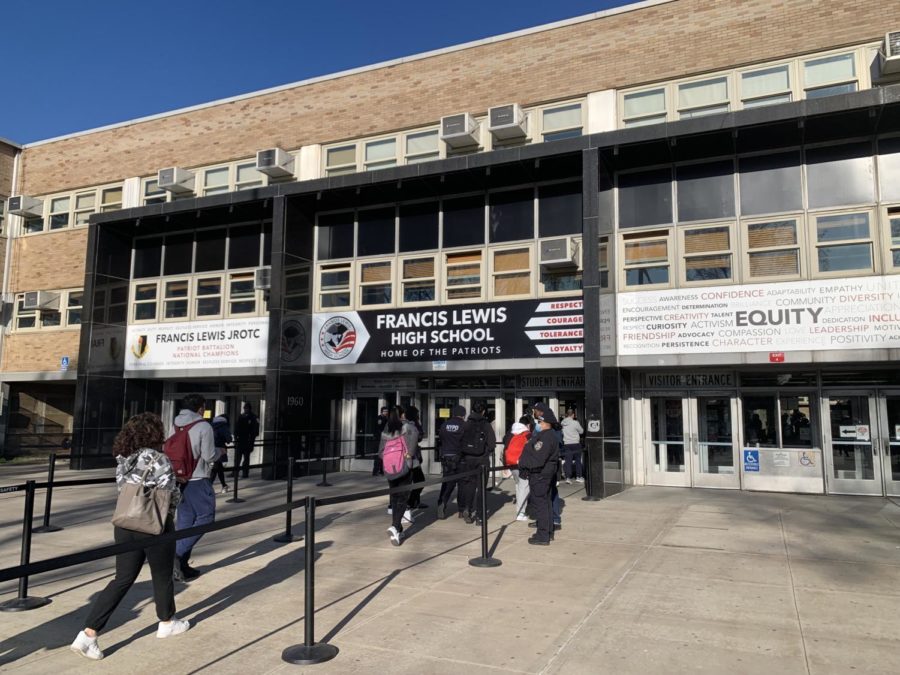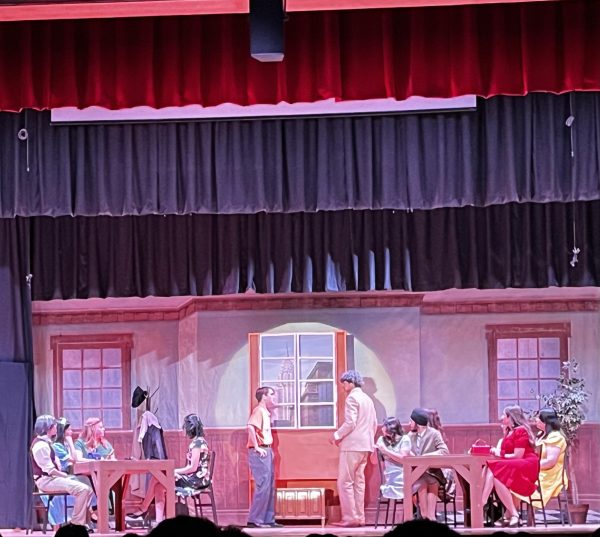Student Lateness to Class Impacts their Academic Success
The first bell rings as the hallways start filling up with students. “You’re going to be late, don’t waste time and go to class,” a dean patrolling the area says to a group of students who are circled around in front of Gym 1. The strip hallway is blocked as the intersection is crowded with students coming from all different directions, including students scurrying in from the annex building. The late bell rings as students continue to talk while the deans repeatedly tell them to go to class.
Consequently, numerous students are late to their next class and faced with displeased teachers.
“It’s frustrating because we end up starting our class roughly 10 to 15 minutes late and students aren’t able to get the work done because there’s just not enough time for the lesson and the work time,” AP Research & English teacher Ms. Engel said.
Research has shown that students who show up late to class typically have lower GPAs, test scores, and also graduation rates.
“Pre-Calc, it affects my grade a lot,” senior Fernando Moran-Tellez said. “I miss out on quizzes, I don’t know the materials we learned on tests and my participation levels go down. In Gym, participation goes down but not too low to generally affect me.”
Teachers have tried implementing strategies to encourage students to arrive to class on time.
“Something we have implemented is collecting Do Now activities or pop quizzes at the beginning of class,” Ms. Engel said. “And if you are not here and you have an excused absence, it will be no grade. But if you are simply late, you will get a zero. That’s to try to encourage students to come in within the first 10 minutes of class instead of 20 minutes late.”
“I think there needs to be some sort of consequence for students who are coming in 10, 15 minutes late to class or for students who are caught just hanging out on the strip and roaming around instead of being in class,” Ms. Engel added. “Sort of like what we are implementing now with the Do Now activities in classwork. It just needs to be uniform and school-wide. The teachers are implementing this.”

Students can arrive late to class for multiple reasons. An anonymous sophomore student discussed why she is regularly late to class.
“I’m usually late to AP World since I go from the third floor to first and people are usually crowding the stairs,” the anonymous student said.
With a student population at around 4500, it’s sometimes normal for students to be late to class if they are commuting from another part of the school building on a different floor, but the students who choose to stand in the hallways talking with friends are creating congestion in an already overcrowded environment.
“It’s important for us to get the kids moving or mind the students when the bell is about to ring, not to wait for the late bell to start going to class,” Dean Mr. Muhsen said. “The second bell means you’re already late, so you should be moving towards your class as soon as that first bell rings, not waiting for the second bell.
“We have to make sure that we’re getting those students to move towards their next class as immediately as possible, not allowing them to kind of sit in, congregate with their friends and continue to spend time in the hallways.”
The exit to the annex is a four way intersection. There are a total of 18 additional classrooms in the annex, which means several hundred students are coming in and out of the annex each period.
“Obviously we give those students more leeway than students that are coming from two classes away,” Mr. Muhsen said. “That is still six minutes late, a different situation that has to be addressed in a different way.”
However, not all students that are late are coming to and from the annex. Some students get caught in traffic jams as there are usually a circle of students hanging out in front of Gym 1, which takes up space in the hallway intersection.
“For English, I’m consecutively late because I walk down from the 3rd floor to a friend’s classroom,” Moran-Tellez said. “I share Calculus with my only good friend, Leo. I don’t see him much or get to talk to him much really so I cherish the moments I have with him.”
“I just walk them to their classes and then I head off to my class,” Moran-Tellez said. “Sometimes the conversations are really good and I get so caught up that I lose track of time.”
English & AP Literature teacher Ms. Prout is upfront with her students, explaining to them that students who are late tend to achieve lower test scores and ultimately lower GPAs.
“I tell them the truth, which is that I find that students taking AP courses, who are either consistently late to class, or are absent in general, tend to not do as well as students who are there in class and learning every day,” AP Literature teacher Ms. Prout said.
Ms. Prout also implements strategies in the classroom to encourage students to arrive to class on time.
“I grade a lot of classwork,” Ms. Prout said. “Almost every day they get a classwork grade, and so the students who are late, many times, if they show up really late, they can’t complete the classwork. So they’ll get a zero on classwork for that day and sometimes that helps. I’ll also call homes, and sometimes that helps too if their parents talk to them as well.”
When students are late to class, they are most likely to be less prepared and organized when they enter the classroom after a lesson is already in session. This would affect their learning process and comprehension of the materials that are being taught.
“I feel like we just have to keep doing what we’re doing,” Ms. Prout said. “Maybe the only thing I could say is if we could incorporate lateness into the grading system, in a more explicit way, I think that that could help.”








